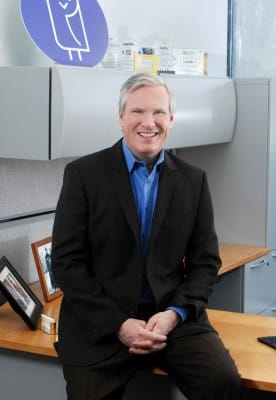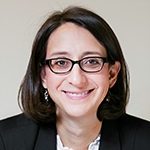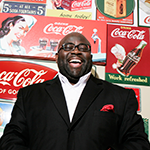
Executive VP of Acquisitions and Strategy
Vantiv
Everything is changing. These days, things seem to be moving quickly, and that’s especially true in the payments industry. Think about it. Fifteen years ago, cash was king. Today, most Americans prefer credit or debit. It’s not just that we have an affinity for plastic—we hate carrying cash. And as technology drives forward, we expect options. Adam Coyle envisions a future where cell phones and sensors replace the wallet, and as executive vice president of acquisitions and strategy at Vantiv, he’s making it happen. The payment processing and technology company, with 2012 revenues of more than $1 billion, is helping build a future where shoppers can walk into a store, pick up an item, and leave without ever interacting with another person. A sensor will scan the item and charge the consumer’s credit card, and Vantiv will process the payment.
No one can predict which company will produce the next innovation in payments, but it’s Coyle’s job to put Vantiv in the position to capitalize on the next big thing. A lawyer by trade, he came to Vantiv in 2009 after helping Advent International, a private equity firm, spin out the company from Fifth Third Bank. He stayed on to support Vantiv in management and M&A.
Today, Vantiv is a full-service payment processor for banks who issue cards and merchants who accept credit, debit, and prepaid transactions. The company works with large retailers like the Kroger Company, Macy’s, Cracker Barrel, and CVS Pharmacy. Financial clients include People’s United Bank and Fifth Third Bank. “People do business with us every day, any time they swipe a credit card at countless locations across the nation,” Coyle says. “They just don’t realize it.”
In 2010, with the company standing on its own two feet, Coyle set out to implement an aggressive growth strategy anchored by acquisitions. “My role was to figure out what business to target, find them, and bring them in,” he says. To find success, he needed to expand distribution channels, product capabilities, and geographic reach. In fact, those three principles still guide Vantiv today.
The payments market in North America is large and fragmented. “There are many ways and delivery channels through which merchants accept cards or consumers receive cards,” Coyle says. “Our goal is to find the best opportunities and capitalize on them.” Historically, consumers swipe cards at one terminal and an owner reconciles data at the end of a business day—but that’s no longer the case. Now, the cash register is a computer and the credit card swipe is being replaced by mobile devices and software systems.
Take a bowling alley, for example. Customers pay for lanes, rent shoes, tip for a meal, and buy retail products. A modern consumer expects integrated payment options, and those demands represent huge areas of growth for Vantiv. The credit card is now simply a vehicle to transport an account number into a computer. Vantiv is finding new ways to inject that number.
The United States has more than 20 million businesses and 14,000 financial institutions. Vantiv needs to forge as many connections as possible between these two groups to capture business. Over the past four years, Coyle has driven the acquisition of card issuers, card processors, technology, and eCommerce companies.
While acquisitions get done for many reasons, Coyle says Vantiv operates not as a consolidator but as a growth buyer. “We look for opportunities that are complimentary to what we do but represent a new sales channel, new geography, or growth technologies,” he explains. Coyle analyzes companies and identifies those that are actionable. Where is a company in its life cycle? What are its expectations? Who are the leaders in the market? Those are all important questions. But one question trumps all others—the question of culture. “We are more thoughtful about culture than most other companies, because we are buying for growth,” Coyle says. “We need people to come in and be immediate contributors. The people we get in a transaction are very important.” As a growth player, Vantiv has a compelling story to tell. The companies it approaches have multiple offers. The strategy—and Coyle’s job—lies in convincing each target that Vantiv is the best home for them.
As everything changes, Coyle knows many small companies will fail. But some will succeed. And those companies will change the way we buy things. Vantiv has a strong legacy of serving banks and merchants while connecting end points on a large scale. The company plans to leverage its scale, partner with or acquire the winners in the tech game, and be there when things are poised change again.

